Seven farms you’d never expect to find in SA: Meet our buffalo, emu and jujube farmers
It’s not all about wheat and sheep on the land in South Australia. Meet the seven farmers sowing and growing some of the state’s most unique products.
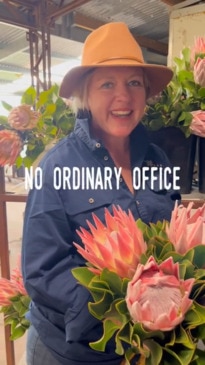
Lifestyle
Don't miss out on the headlines from Lifestyle. Followed categories will be added to My News.
It’s long been said Australia was “built on the sheep’s back” and while the wool industry remains an integral part of rural South Australian, an increasing array of diverse and interesting produce is now also being farmed.
We headed out across the state through the horticultural holdings, vineyards, dairies, sheep and beef properties, beyond the canola, barley and golden wheat fields to find some of the one-off farms, quirky produce and crops you don’t necessarily expect to find in SA.
While we know there are plenty more to explore – including pomegranates in the Riverland and Christmas tree farms in the Adelaide Hills – here are seven of our favourite farms.
Native flower wonderland
Kidman Flower Co, Balhannah
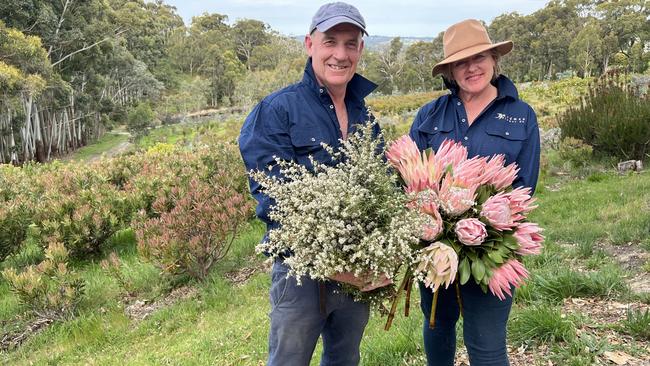
It’s hard to imagine a more picturesque workplace than Kidman Flower Company, a unique Adelaide Hills farm specialising in native Australian flowers and proteas.
Its beauty isn’t lost on Desy and Ange Kidman who took over the 60 hectare property more than two decades ago, moving to Balhannah from the Mallee where they’d been growing potatoes and overseeing a Geraldton wax and olive plantation at Parilla.
“I make sure I appreciate it every day … it is so gobsmackingly beautiful,” Mr Kidman, who grew up on a mixed farm and winery at Coonawarra, says.
His wife, the daughter of a Mount Gambier potato producer, adds: “Our staff tell us that when they come to work they are often a bit stressed but by the time they leave they are completely chilled”.
“We’ve been doing this for 22 years and you never get sick of it … when the first flowers come in each season it is like seeing an old friend again – we are dealing with a really beautiful product.”
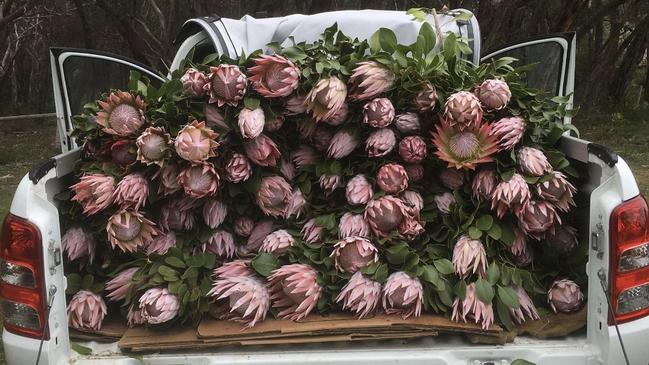
And she isn’t wrong; the vibrant colours and vast array of stunning flowers on property look nothing like the dusty, dried flower arrangements that can give native flowers a bad rap.
Mrs Kidman’s favourite is the striking, now-flowering pink king protea, which originated in South Africa, while her husband favours the brilliant pink Geraldton wax, a Western Australian native.
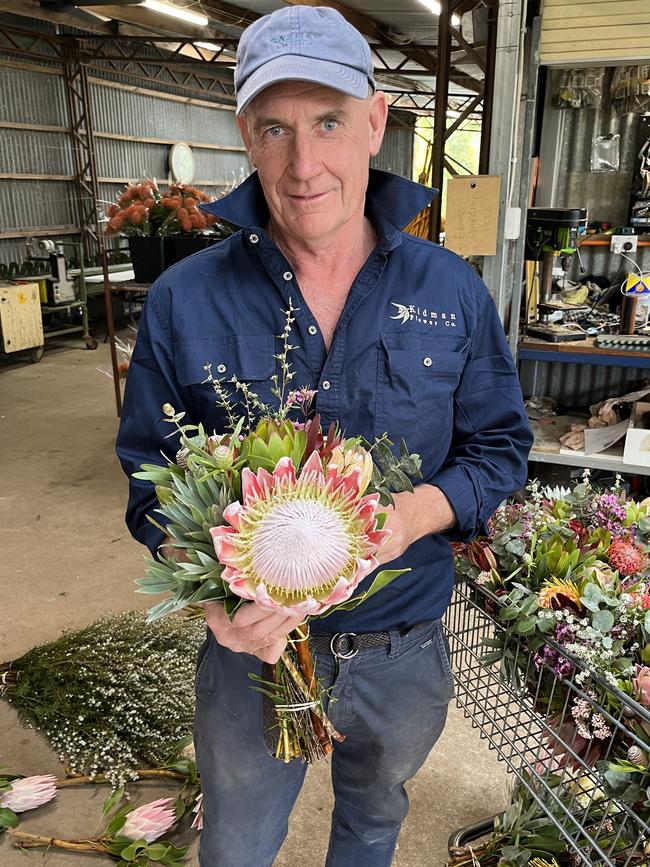
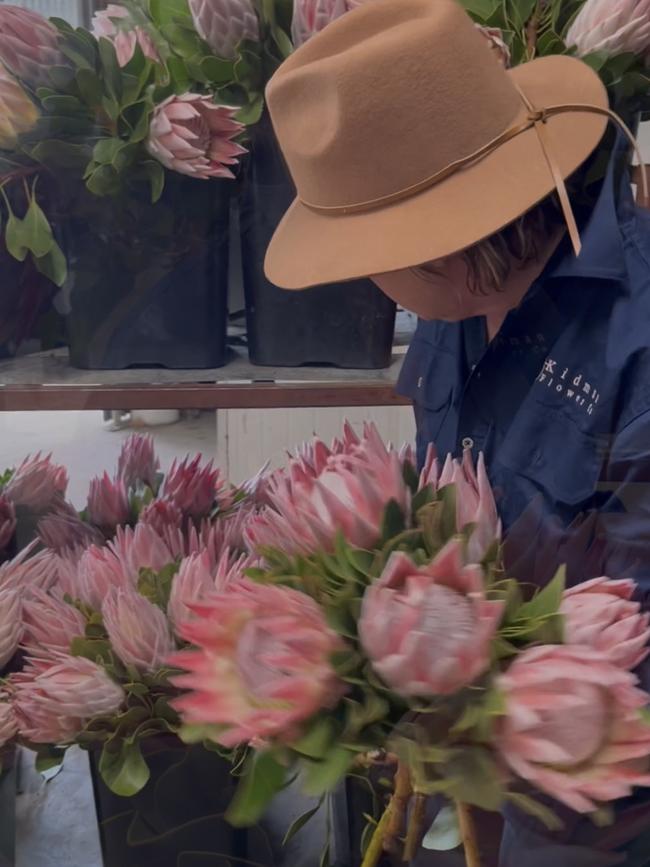
The couple is proud of its organic, open field plants and shrubs which includes rice flower, agonis, tea tree, acacia, waratah, kangaroo paw and Eucalyptus pulverulenta, also known as silver-leaved mountain gum; a range of protea and leucadendron are also grown.
“(Natives) add a wild and kind of whimsical element to arrangements and can be used among some of the more traditional soft flowers, such as roses and lilies,” Mrs Kidman says.
An export business when the Kidmans took it over, today almost all flowers are sold locally with 30 per cent of produce sold interstate through Brisbane’s wholesale market.
“We are really passionate about supplying local flowers to locals … we can identify each bucket and say when the flowers were picked. We sell at the shed door to florists and private buyers.”
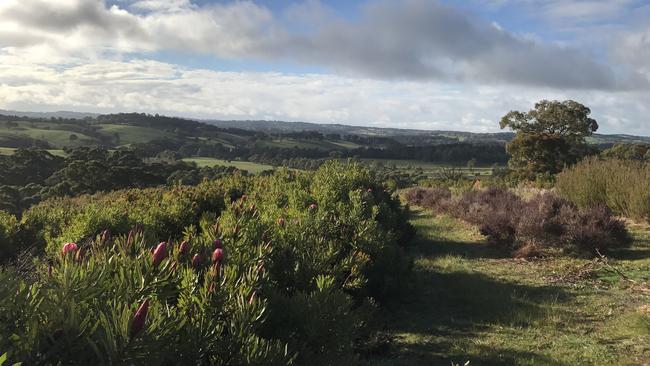
Flowers are harvested from March through to late December.
“There is a lot to love about what we do … we love that our parents were always around and it made absolute sense to us to give our three boys (now aged 19 to 25) what we had, to grow up on the land,” Mrs Kidman says.
A whole lot of buff
South Australian Buffalo Company, Mypolonga
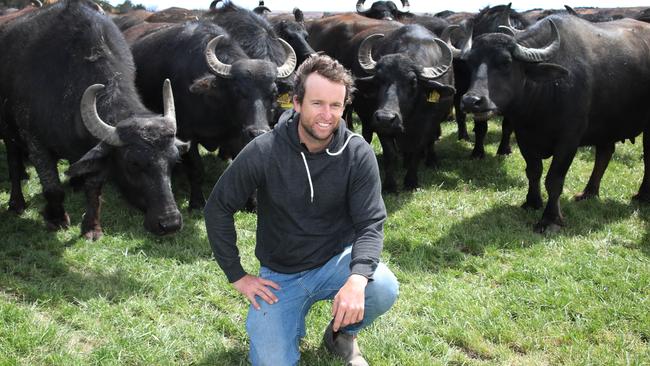
Don’t be put off by their 800kg mass or large horns, at heart buffaloes are more lamblike than they are bullish, says the state’s only buffalo dairy farmer Corey Jones.
You’ve just got to learn to work on “buffalo time”.
“I always say there is a reason no one else is milking buffalo in SA because there is definitely an art to it … you’ve got to be a lot more patient (than with cows),” Mr Jones, 33, who spent his early childhood on a conventional dairy property, says.
“They are a pretty likeable animal and very docile but they are very intelligent and it is ‘their way or no way’ … they just might be the most stubborn animals on earth to deal with.
“Here we run on buffalo time … (working with them) you have to do things smartly and think like a buffalo.”
Mr Jones and his wife Molly have been farming buffalo for almost 10 years after adjusting the family’s unused dairy to accommodate the larger-sized, horn-clad bovine that grunts, rather than moos.
“Mum and Dad sold our dairy cows when I was 13 but kept the property,” Mr Jones says
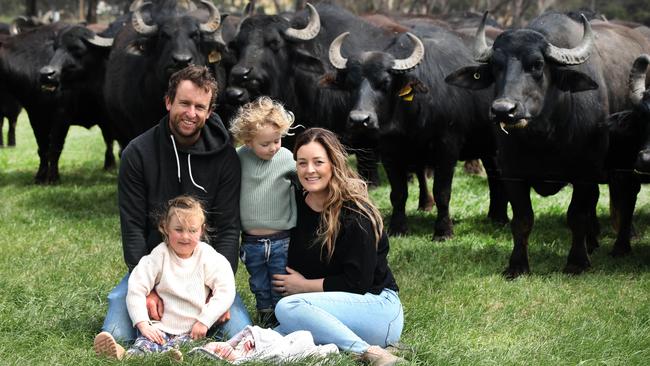
But there was no taking the farm boy out of the young teenager who spent time working on neighbours’ properties whenever he could.
The qualified carpenter spent a few years working and playing footy in Adelaide before returning home and taking a leap of faith with buffaloes, after a chance conversation with a local cheese maker bemoaning the lack of locally-produced, high-protein buffalo milk.
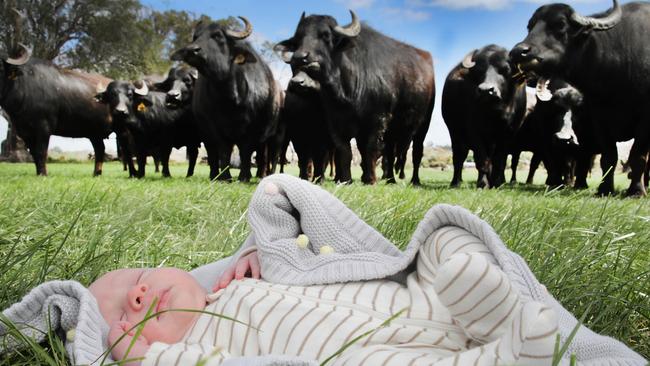
He purchased 30 riverine buffalo in 2014 and has built his herd to 400 with the best of his “buffs” producing 20 litres of milk a day, supplying milk locally as well as into Melbourne and Sydney.
The milk is used to make a range of soft cheeses, blue cheese, feta, mozzarella and curd, as well as cream.
“Buffaloes don’t produce as much as dairy cows but have almost double the yield in terms of fat and protein … it is quite a heavy milk, yet I think it tastes lighter,” he says.
“There were definitely people who had their doubts and thought I was crazy (but) I don’t like to be beaten … I am probably just as stubborn as the buffaloes.”
As well as building their farming enterprise, the couple have been growing their family, welcoming little Ned a month ago, a beautiful baby brother to Nina, 4, and Rupert, 2.
Big bird HQ
Southern Emu, Moorook
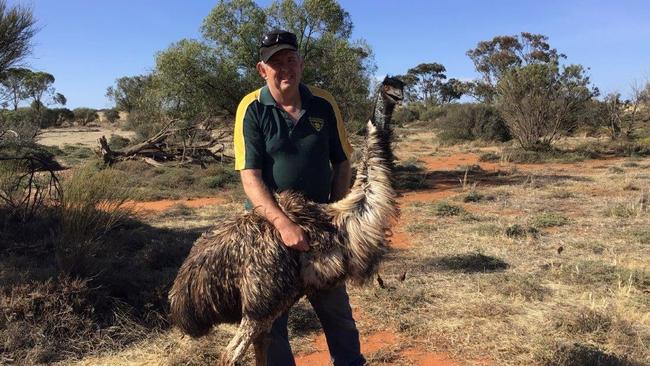
Wayne Piltz always dreamt of being a farmer but didn’t imagine as a young man he’d carve out a livelihood rearing large, flightless native birds en masse.
Aged 75, he and his son Daryn, 50, are now the state’s only remaining emu farmers, running as many as 2000 birds on their property at Moorook in the Riverland.
Emus are produced for lean red meat, leather and, increasingly, to produce emu oil which is extracted from the birds’ fat deposits; lauded by many for its medicinal and cosmetic benefits as an anti-inflammatory and skin-hydrating tonic, also said to boost collagen production.
Mr Piltz grew up in New South Wales, the son of a farm labourer, moving to SA after a stint as a “pen pusher” to work in the citrus industry, spending time also on vineyards as well as stone fruit and avocado properties.
When the chance arose for him to secure a licence to farm emus, he jumped at it.
“There was a movement in the early to mid 1990s to allow emu farming with more than 100 licences issued across SA … we are the last ones left,” he says.
“As I always say, there is still one idiot in South Australia.”
While hens in the wild will lay 10 to 14 eggs, on a farm they’ll produce up to 30 where they are collected and put in an incubator with hatched chicks then hand raised.
Chicks are fed a special game bird formula while mature birds are given a mixture of grain, hay and used cooking oil.
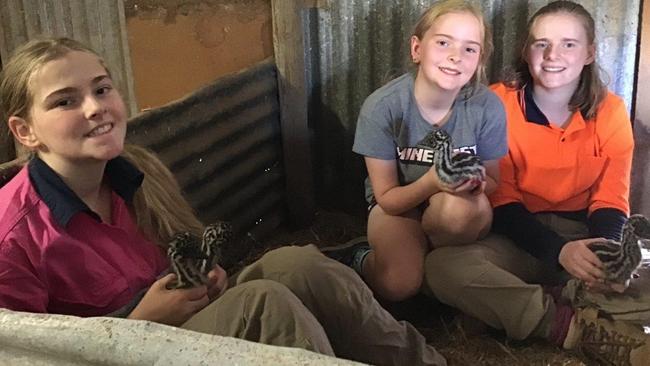
Mr Piltz says emus lay their eggs over a three-month period from March.
“It all depends on the weather conditions, they won’t start laying until they know there is going to be rain so that there will be green pick for the chicks when they hatch,” he says.
As there is no longer an abattoir to process the emus in SA, the birds from Southern Emu are trucked to Victoria.
And what are emus like to try and manage?
“They can get a bit toey, especially in breeding season, but they are all right; you get used to them and they get used to you … some of them become very friendly and others don’t – it just depends on the temperament of the individual bird,” Mr Piltz said.
SA’s home of the ‘weird apple’
Black Sheep Produce, Loxton
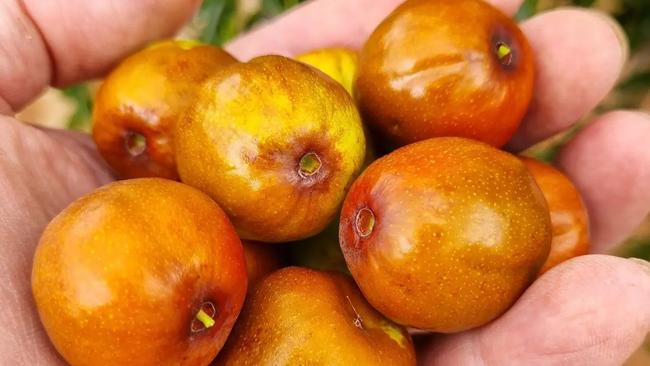
Described by some as a “weird apple”, the unusual fruit is the crown jewel of a unique Loxton farming enterprise.
Former park rangers-turned farmers Dave and Heidi Setchell have been producing the ancient fruit jujube, referred to as a Chinese date, for the past seven years at their curiously-named property, Black Sheep Produce.
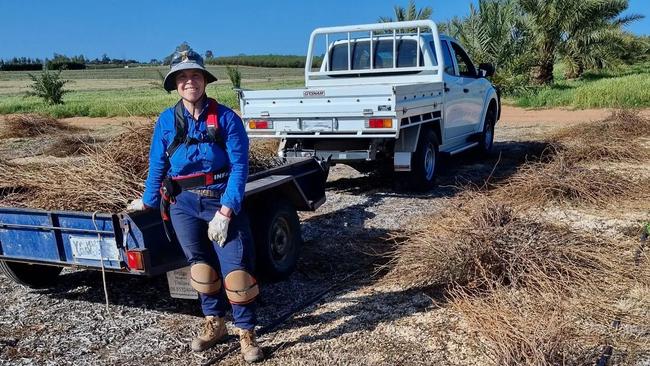
“The majority of Australians have no idea what a jujube is but for (those of Asian heritage) it is a big deal to be able to get hands on fresh jujube, grown in Australia,” Mr Setchell says.
“They are crispy like an apple but not as juicy with a unique flavour that is a bit like a cross between an apple and a pear … they start yellow and get patches of red as they ripen … the riper (and redder) they are, the sweeter they are.
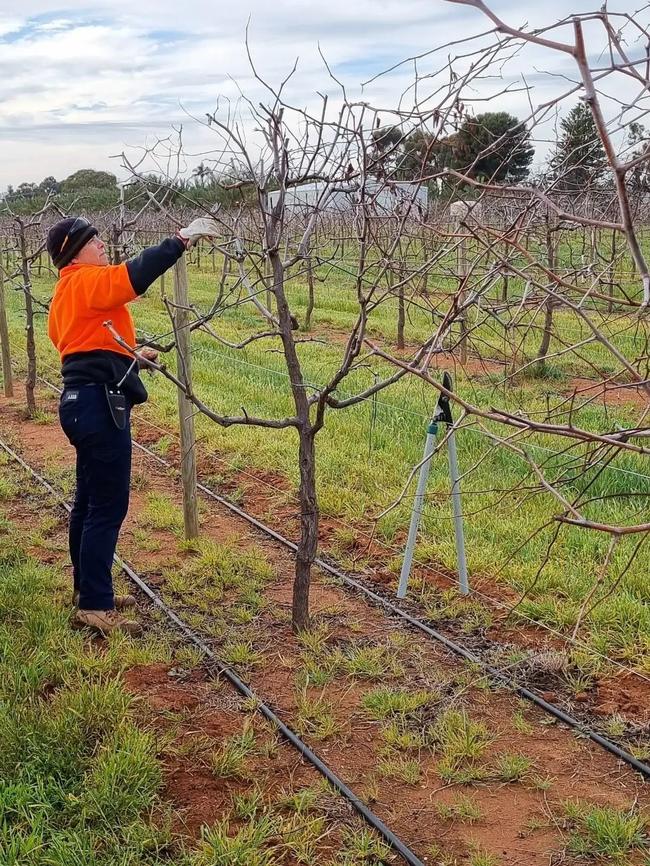
“The trick is in picking them at the right time as they don’t ripen after they’ve been picked and have only a short shelf life … getting it right has been a learning process.”
The Setchells, who previously had a property producing broom bush for brush fencing, were drawn to the exotic fruit, due to its hardiness.
They also grow the “ancient food crops” of dates and capers, popular across the Mediterranean region, for the same reason, collecting and curing both caper buds and berries.
“If we had to turn the irrigation water off, we wouldn’t get a crop but the plants wouldn’t die … we’ve gone through some pretty dry times and have witnessed people not having enough water to keep plants alive,” Mr Setchell says.
“Given there aren’t many people in Australia growing the things we do, it’s not just a ‘tick the box’ sort of exercise and it can be challenging, even lonely at times, as there isn’t a lot of existing knowledge … but it is also interesting and rewarding.”
Many of the fresh SA jujubes are sold interstate in Melbourne and Sydney at specialist Asian supermarkets and greengrocers with some local supermarkets, such as Frewville Foodland and Koch’s Foodland at Loxton, also stocking the fruit when in season.
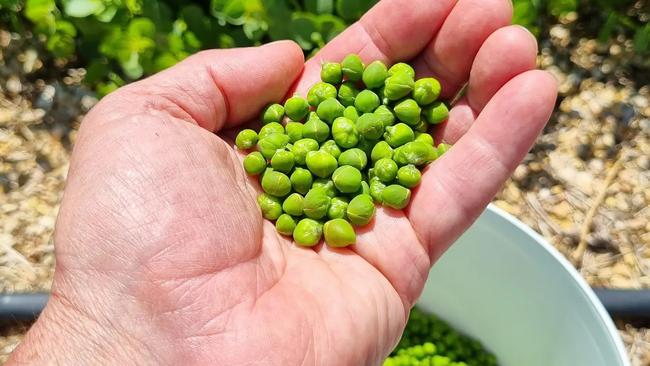
As well as selling the fruit fresh, jujubes are also dried on the property.
And why is a farm that produces fruit called Black Sheep Produce?
“Simply because we like to do things differently … and believe that there is a great future for these alternative crops in Australia,” Mr Setchell says.
‘Chickens with a puppy dog soul’
Pip and Grow, Littlehampton
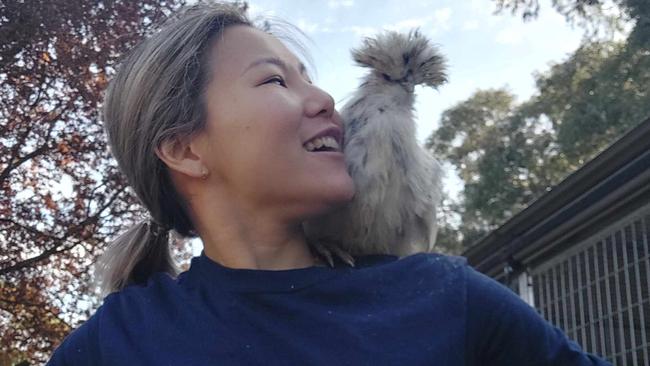
A hobby has turned into a full-time profession as well as family lifestyle for Hanna Lee, Topher Mullard and their family.
The couple, along with their four children aged seven to 17, have been growing their small-scale heritage chicken farm at Littlehampton, Pip and Grow, since 2021.
The work is around-the-clock, 365 days a year with eggs collected twice daily.
“This is a job that requires passion, dedication and love … the priority is looking after our breeding birds, providing the right care they deserve all year round to keep them happy and healthy,” Ms Lee says.
“Heritage chickens lay from spring (September) through until late summer (March) … this is our busiest time and when we incubate weekly … (there’s) lots of hatching, chirping and growing.
“We love hearing from our interstate customers that our eggs have hatched successfully, even after running the Australia Post gauntlet of aeroplane rides, X-rays, sorting belts, bouncy truck and van trips … this makes us feel really proud.
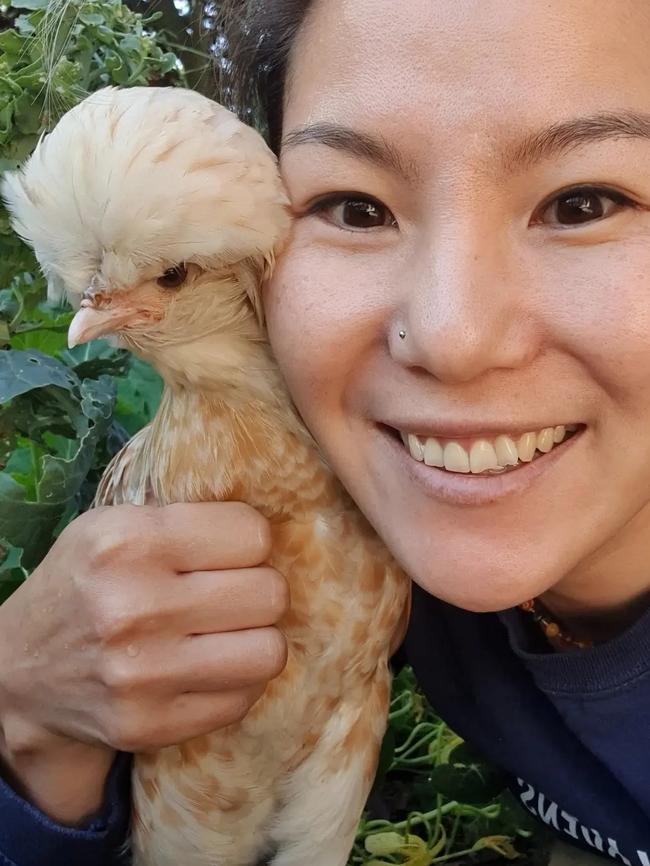
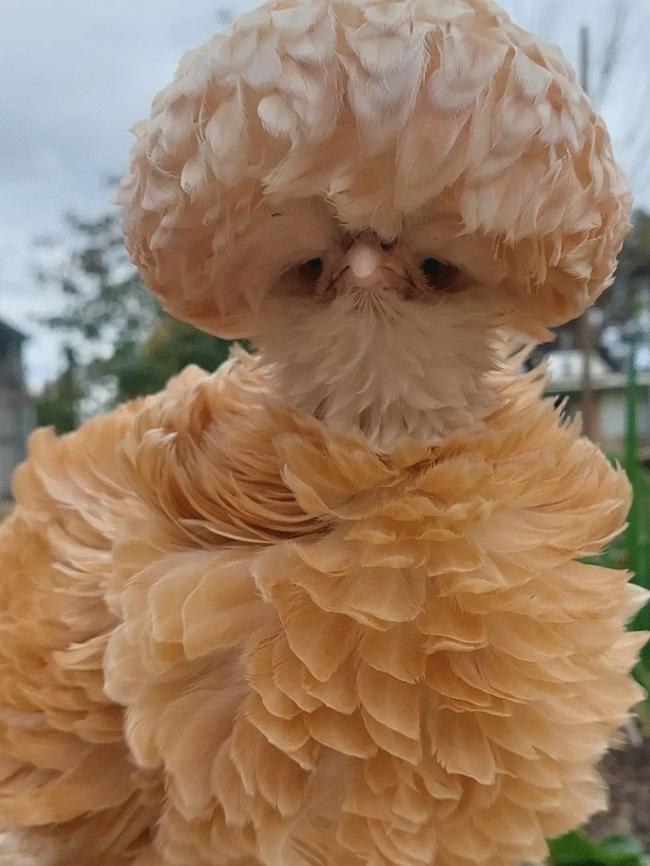
“We currently offer nine different heritage breed fertile eggs for shipping Australia-wide as well as day-old chicks for pick-up.”
The eggs of the heritage chickens vary in colour, ranging from white, cream and brown to blue, green, pink – and everything in between.
“For example, French marans produce dark chocolate-coloured eggs, araucanas lay gorgeous sky-blue-to-minty-blue-coloured eggs while Polish produce white eggs,” Ms Lee said.
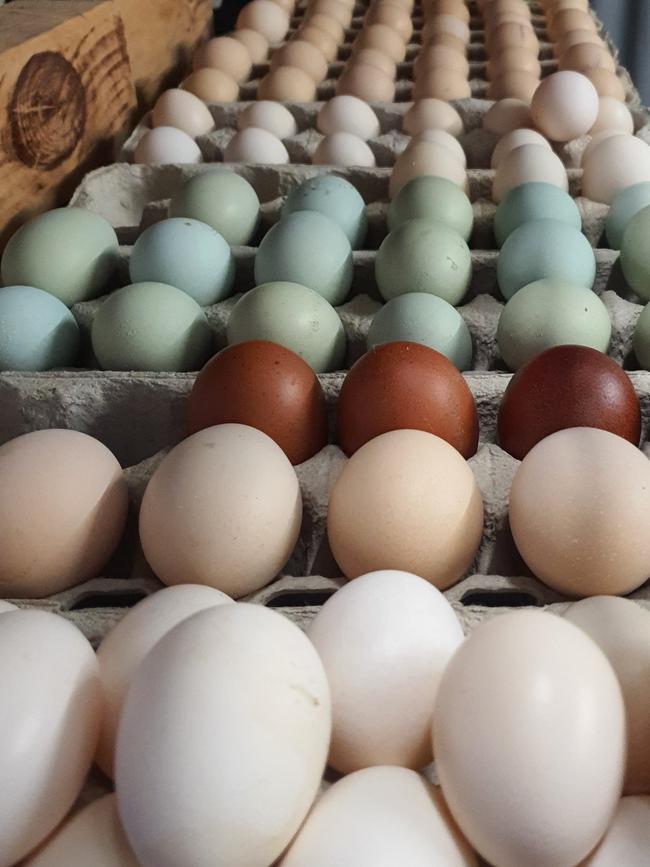
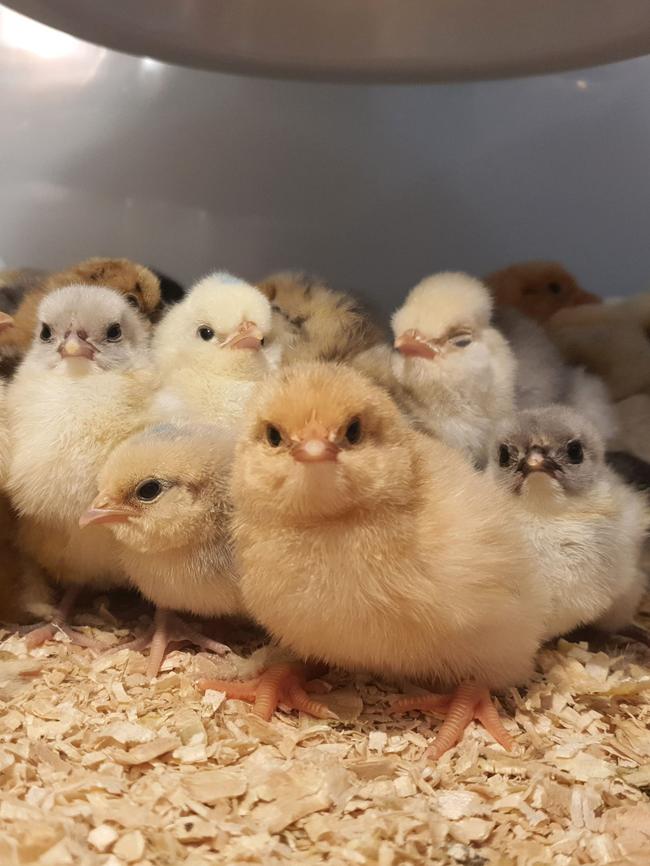
And does she have a favourite?
“That is hard as we love all of our birds, they are all so different, quirky and special in some way … chickens are a very close descendant of the T-rex and we (recognise that) in some of them on occasion,” she laughed.
“But if I had to pick, it would have to be Orpington. We call them chickens with a puppy dog soul … they are such a wonderful breed; they are fluffy, cuddly and always gentle and silly without a mean bone in them.
“We’ve a chocolate bantam Orpington hen named ‘Naughty 40’ who is an absolute cracker of a chicken and often appears on our social media reels … we’ve ‘Chubby’, a splash-bearded silkie hen, ‘Bubble’ a buff-laced Polish bantam and ‘Jill’, a buff-laced Polish frizzle bantam … really they are all our favourites.”
Doing the ‘pipi shuffle’
Goolwa Pipi Co, Fleurieu Peninsula
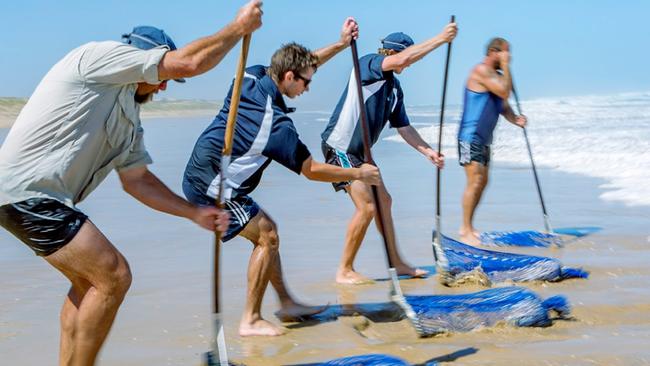
Hand-harvesting pipis – a small, smooth-shelled clam found near Goolwa – is about as far removed from a nine-to-five office job as you can get.
“The hardest thing is, you are working in a high-energy surf beach and when you’ve got to catch them, ‘you’ve gotta catch them’ … sometimes our crews have to operate, trying to dig pipis as the surf is crashing around their ears,” Goolwa Pipi Co director Tom Robinson says.
“We hand harvest our pipis so they are literally caught by diggers with their feet and a rake with a net on it … it is called the pipi shuffle.
“It is like a dance you do with your feet which agitates the sand and brings the pipis to the surface, then the pipis are dragged out with the outgoing wave and caught in the net.”
PipiCo, which was incorporated in 2014 when several local fishing families came together, offering the local Ngarrindjeri people a shareholding in the business, is licensed to gather pipis along a 70km stretch of coastline, on the south-eastern side of the Murray mouth.
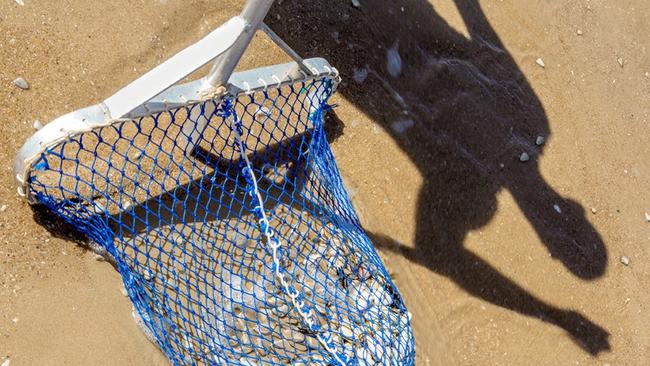
The company employs 10 people to do the harvesting with 15 more working in its factory, packaging product.
This year a healthy haul of 550 tonnes is expected. A team of four can gather as many as 700kg in two hours.
“This year, following two years of strong outflows from the Murray mouth the resource is in a very strong position,” Mr Robinson says.
“The thing I love most is the fact that the Ngarrindjeri people have been sustainably fishing this resource for 19,000 years and are now doing it in a modern company that exports its products around the world.”
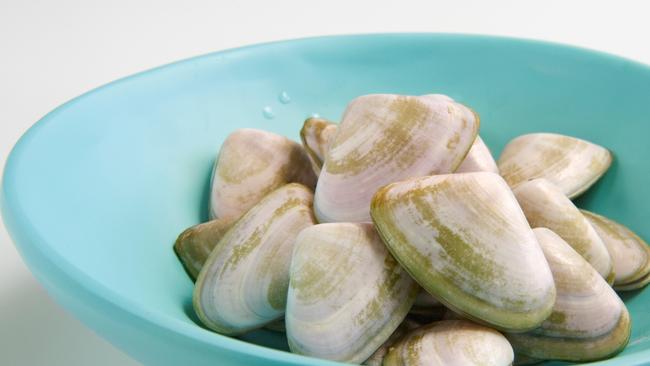
While commercial operators can collect the clams all year round, the recreation sector can only fish from November through to the end of May.
And what is the best way to eat pipis?
“I like them simply cooked on the barbecue with butter, garlic and tarragon sauce … they’re great, I love them,” Mr Robinson says.
Blanket of bridal bouquets
Gooseberry Hill Farm, Meadows
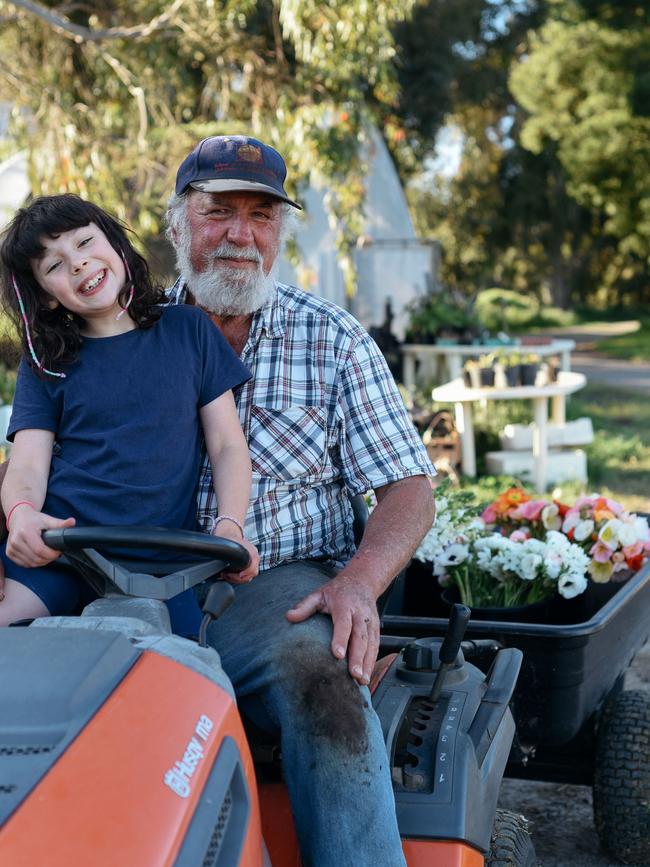
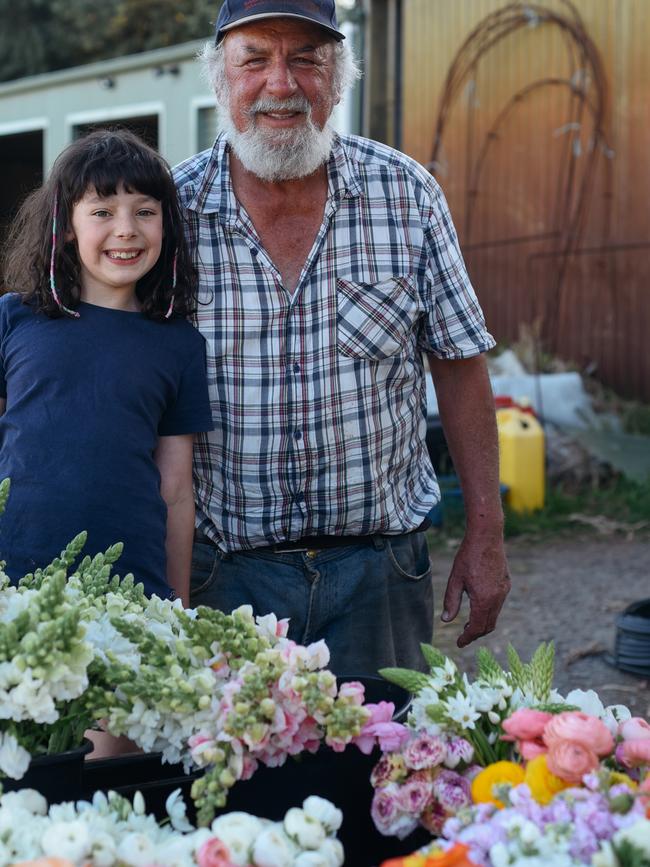
A long-time Adelaide academic has transformed a Meadows paddock into a stunning blanket of bridal bouquet blooms, predominantly growing flowers for the wedding industry.
Geoff Page, who worked for almost four decades at UniSA as a lecturer, head of school and student ombudsman, has created the sweet-smelling sanctuary on a section of farm formerly owned by his grandfather.
Today Mr Page runs Gooseberry Hill Farm with his wife Anna, growing a variety of flowers in line with wedding day trends.
Wedding florists will travel to the Adelaide Hills property to collect the flowers they want.
“We grow a diverse range of colours but each wedding season tends to have a colour phase … one of my florists has tipped blue will be popular in the coming season, so I have planted a lot more blue this year,” Mr Page says.
“In terms of the spring wedding season, anemone (which is white flower with a black centre that closes up when dark) is always popular as are ranunculus (a spring-flowering plant which produces very bright and showy flowers in a range of colours including yellow, red, white, pink and orange).
“For outdoor installations, statice (long-lasting annuals with sturdy stems and compact, colourful blooms) is popular as is strawflower (described as having ‘charming, straw-like blooms in bright shades’) … they can handle the heat and won’t wilt.”
As well as growing flowers to cater for the wedding industry, bunches and posies from Gooseberry Hill Farm are sold at the Adelaide Hills Farmers Market in Mount Barker each Saturday morning and at the Adelaide Showground Farmers’ Market on Sunday.
“We’ll generally sell between 250 and 300 bunches of flowers across the weekend at the two markets and as many as 100 posies on special occasions, such as Mother’s Day,” Mr Page says.
Now aged 68, Mr Page reckons he still has a “couple of decades” of flower growing left.
“My father still helps in the nursery doing a bit of watering and he has just turned 98, so can say I will probably be still farming for another 30-plus years,” he says.





